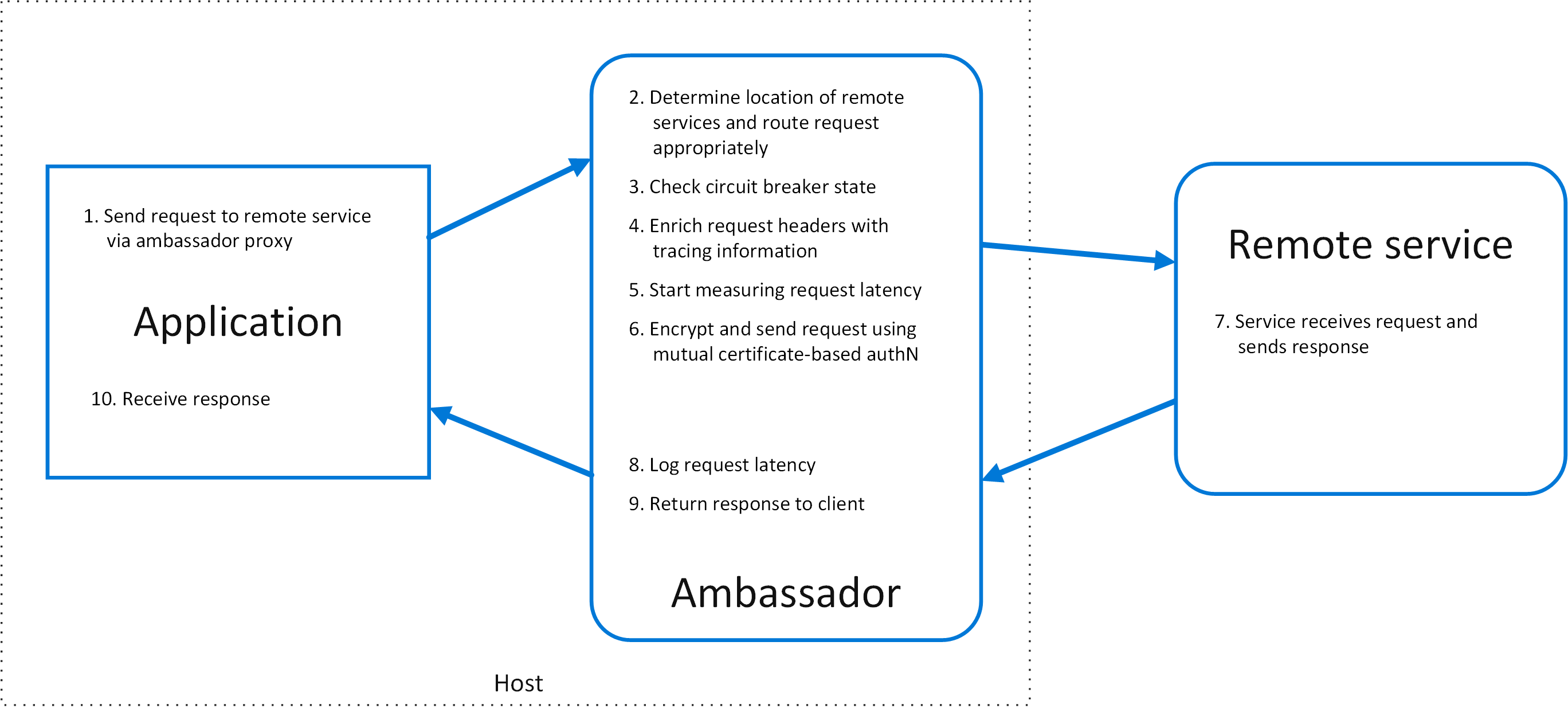Streamlining Microservices: Mastering the Ambassador Pattern for Efficient Network Communication
 Pratik Panda
Pratik Panda
The Ambassador Pattern is a cloud design pattern that simplifies the management of network communication operations. It allows a service to offload certain communication-related tasks to a helper service, known as an 'ambassador,' thereby streamlining the overall process.

This pattern is particularly useful in microservices architectures, where it helps to manage cross-cutting concerns such as retry, circuit breaker, logging, monitoring, and routing, thereby allowing the primary service to focus on its core functionality.
Real-World Application: E-commerce Platform Example
Consider a microservices-based e-commerce platform where different services handle user authentication, product catalog, and order processing. By implementing the Ambassador Pattern, the platform can offload tasks like logging, monitoring, and retry logic to dedicated ambassador services, ensuring that each microservice focuses on its core functionality without being bogged down by cross-cutting concerns.
Addressing Single Point of Failure and Ensuring High Availability
There can be a single instance of an ambassador for all the microservices in the system. However, in such cases, the ambassador can become a single point of failure. To prevent this problem, the system can be designed to have multiple instances of the ambassador. We can even take this a step further by having a dedicated ambassador for each microservice.
Key Considerations for Implementing the Ambassador Pattern
Microservices need to follow a general communication pattern.
Adds some latency overhead.
Ensure retries are used only for idempotent operations.
Allow clients to pass context to the ambassador (using headers). This helps the ambassador make decisions about the request at run-time, such as whether to retry or not.
Single ambassador instance vs. multiple ambassador instances.
Ideal Scenarios for Using the Ambassador Pattern
Microservices are built on different tech stacks, making it impossible to have a common framework or library for cross-cutting communication concerns.
Individual microservices should not handle cross-cutting communication tasks.
Support cloud connectivity for a legacy application.
When to Avoid the Ambassador Pattern
Network latency is critical.
Microservices are built on the same tech stack. A more efficient way is to have a common framework or library for cross-cutting communication concerns.
Microservices do not follow a generalized communication pattern.
Conclusion
In conclusion, the Ambassador Pattern is a powerful tool for managing network communication in microservices architectures. By offloading cross-cutting concerns such as retry logic, circuit breaking, logging, and monitoring to dedicated ambassador services, it allows primary services to focus on their core functionalities. While it introduces some latency overhead and requires careful consideration of idempotent operations and communication patterns, its benefits in terms of modularity, maintainability, and scalability make it a valuable pattern for complex, distributed systems. Proper implementation, including strategies to avoid single points of failure, ensures high availability and robust performance, making the Ambassador Pattern a key strategy for efficient network communication in modern cloud-based applications.
References
Subscribe to my newsletter
Read articles from Pratik Panda directly inside your inbox. Subscribe to the newsletter, and don't miss out.
Written by

Pratik Panda
Pratik Panda
Hi there! 👋 I am a Consultant in Cloud Application Development at Microsoft. Things I primarily work on include (but not limited to) the following: Architecting and developing distributed cloud-native systems on Azure. Crafting robust application frameworks and architectures. Programming with C# and leveraging the .NET ecosystem. Implementing Kubernetes and containerization for scalable solutions. Streamlining processes through DevOps methodologies.